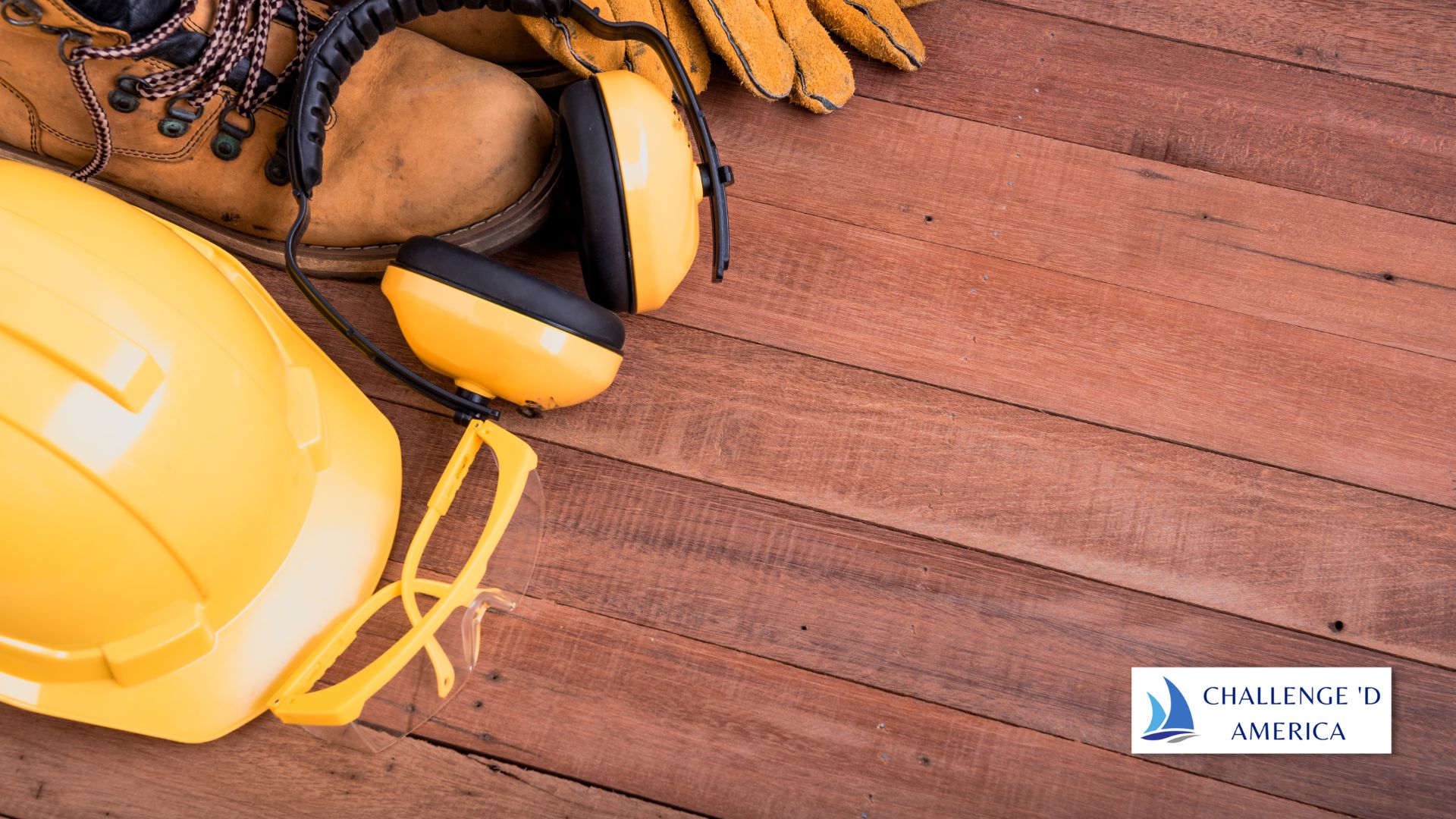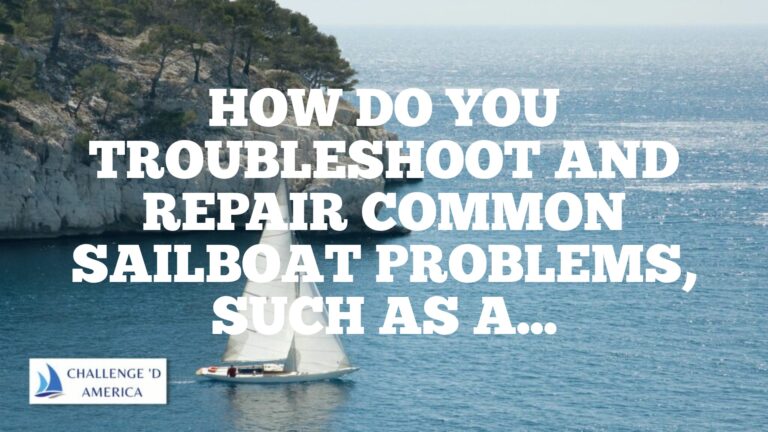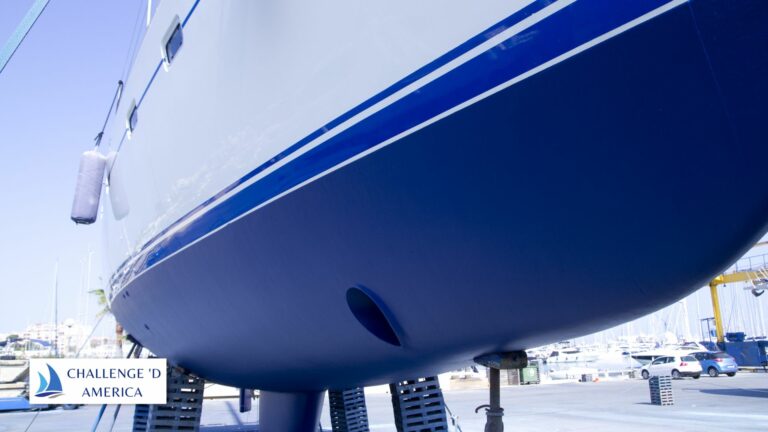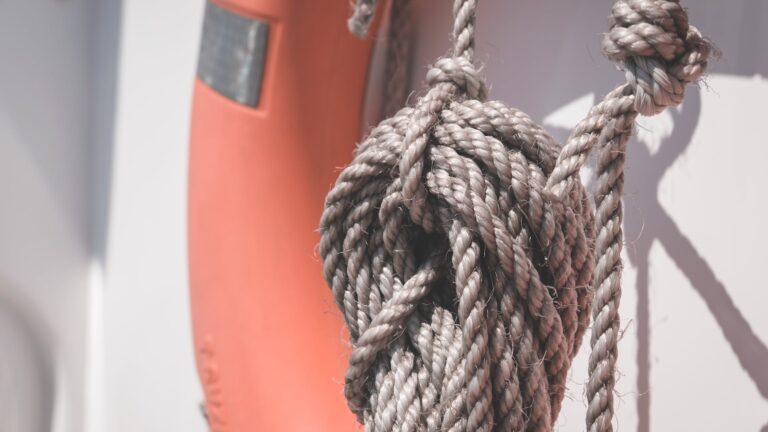What Safety Equipment Is Needed For A Boat?
As a lifelong sailor, I understand the importance of safety when it comes to boating. Whether you’re an experienced sailor or a newbie, it’s essential to have the right safety equipment on board.
In this article, I’ll explain what safety equipment is needed for a boat, and why it’s so important to always have it with you. By following the guidelines outlined in this article, you can ensure your safety and the safety of everyone on board. So let’s get started!
Vessels 16 To 26 Feet
Ahoy fellow sailors! I’m here to discuss the essential safety equipment needed for boats in the 16 to 26 feet range. Many of us have boats this size and it’s important to be aware of the safety equipment that should be on board.
It’s essential that you have the right safety gear, as it could save your life in an emergency situation. In this sub section, I’ll discuss the equipment that should be present on vessels between 16 and 26 feet. So, let’s hoist the sails and get started!
Personal Flotation Devices (PFDs)
When you are out sailing on a vessel between 16 and 26 feet in length, it is absolutely essential to have the proper safety equipment on board. One of the most important pieces of safety equipment is the personal flotation device, or PFD.
PFDs are designed to keep a person afloat in the water, even if they are unconscious. While there are many different types of PFDs available, the U.S.
Coast Guard recommends that everyone onboard wear a PFD at all times when the vessel is underway. This is especially important for vessels of this size, as they are more susceptible to capsizing and other accidents.
When selecting a PFD, make sure it is the proper size for the intended wearer and that it is approved by the U.S. Coast Guard. Additionally, make sure to check that there are no signs of wear or tear and that all buckles and straps are securely fastened.
Finally, be sure to check the expiration date on the PFD. Most PFDs need to be replaced every five years, so make sure to check regularly to ensure your PFD is up to date and in proper working condition.
Visual Distress Signals
When operating a vessel between 16 and 26 feet in length, it is important to be aware of the various visual distress signals you may use in case of emergency.
Visual distress signals are a critical component of safety on the water, alerting other vessels and personnel of your location and condition.
The United States Coast Guard requires that all vessels 16-26 feet in length be equipped with several types of visual distress signals, including day signals, night signals, and combination day/night signals.
Day signals, such as orange smoke signals, are primarily used in flat and open waters, and should be used when other vessels are visible in the vicinity.
Night signals, such as flares, are used when visibility is low, and should be used if no other vessels are in sight. Combination day/night signals, such as pyrotechnic orange hand flares, are ideal for both day and night use.
It is important to understand the proper use of visual distress signals, as well as your legal obligations as a vessel operator. Remember, visual distress signals are only to be used in cases of grave and imminent danger, and should only be employed as a last resort.
Sound-Producing Device (Bell, Horn, Whistle, Etc.)
As any sailor knows, sound-producing devices such as bells, horns, and whistles are essential for safe navigation.
Vessels in the 16-26 foot range should have a sound-producing device on board to alert other vessels of their presence, especially during times of low visibility or when maneuvering in tight quarters.
When choosing a sound-producing device for your vessel, be sure to select one that is loud enough for other vessels to hear at a safe distance.
Bells and whistles will usually suffice in most cases, but for larger vessels or in noisier environments, you may want to consider a marine air horn, which can be heard over greater distances.
Whichever type of sound-producing device you choose, be sure to test it before setting sail to ensure it is working properly and that it is loud enough for other vessels to hear. It is also important to follow all applicable safety and navigation regulations to ensure your vessel and crew remain safe.
Backfire Flame Control
When sailing a vessel between 16 and 26 feet, it is important to take extra care to ensure that backfire flame control is in place. Backfire flame control keeps the engine and fuel systems safe from potentially dangerous fire risks.
To properly control backfire flame, the engine should be equipped with a flame arrestor. This device contains a mesh filter that catches any flames that could potentially backfire from the engine.
Additionally, the fuel system should be regularly inspected to make sure that there are no leaks or blockages that could cause a backfire.
Finally, make sure to keep the engine clean and well maintained to reduce the risk of a backfire. Taking these steps will help ensure that your engine and fuel systems remain safe while sailing.
Vessel Lighting
Vessels 16 to 26 feet long require proper lighting for safe sailing. These vessels need to be properly lit for the safety of the crew and other vessels on the water. The lights must be visible from all angles, and should be mounted in a way that is easy to access.
Deck lighting should include a white all-round light, and a masthead light. The all-round light should be mounted in a way that it is visible from all angles, and the masthead light should be mounted at the top of the mast. Other lighting may include navigation lights, a stern light, and a searchlight.
For interior lighting, you should use lights that are specifically designed for marine use. These lights can withstand the harsh conditions of the ocean, and are also certified for use on vessels. Many marine lights are LED, which are energy efficient and long-lasting.
When choosing lights for your vessel, make sure that they are rated for the size of the vessel and the type of sailing you plan to do. This ensures that your vessel is properly lit, and will help you stay safe on the water.
Vessels 40′ To Less Than 65′(20M)
As a professional sailor and sailing safety expert, I’m here to help you understand the safety equipment needed for a boat. Today, we’ll be discussing the requirements for vessels 40′ to less than 65′ (20m).
These boats are often used as luxury vessels, so it’s important to make sure they have the right safety gear onboard.
It’s also important to remember that different countries have different requirements for safety equipment, so be sure to do your research before setting sail. With that in mind, let’s take a closer look at the safety gear needed for vessels 40′ to less than 65′ (20m).
Personal Flotation Devices (PFDs)
When sailing on a vessel 40’ to less than 65’, it is important to make sure that personal flotation devices (PFDs) are readily available for all on board. PFDs are designed to help keep a person afloat in the event of an emergency.
The type of PFD needed will depend on the size and type of vessel, as well as the location and conditions of the water. Generally, all persons on board should have a US Coast Guard approved Type I, II, III, or V PFD.
Type I PFDs are the most buoyant and are typically used in open waters, while Type II and III PFDs provide less buoyancy and are generally used in inland and recreational waters. Type V PFDs are special-use PFDs that are designed for specific activities, such as kayaking or paddleboarding.
It is important to make sure that PFDs are properly sized and fit properly on the wearer. All PFDs should be checked regularly to make sure they are in good working condition and are not damaged in any way.
PFDs should be worn at all times when on board, and during any activities on the water. Taking the proper precautions and being aware of the potential dangers of the water is the best way to ensure that everyone on board is safe and secure.
Fire Extinguishers
One of the most important safety items aboard any vessel 40’ to less than 65’ is a fire extinguisher. A suitable fire extinguisher should be on board and easily accessible for any emergency situation.
Portable extinguishers should be rated for the type of fire likely to occur on the vessel, and should have a suitable fire rating as designated by the U.S. Coast Guard, such as a U.S. Coast Guard approved Type B-I, II, or III extinguisher.

It is important to inspect and maintain the fire extinguisher on a regular basis, ensuring it is suitable for use in case of a fire.
Additionally, there should be at least one fire axe and fire extinguisher bracket aboard. This will help ensure quick and safe access to the fire extinguisher in the event of an emergency.
Visual Distress Signals
When out on the water, it is important to be prepared for any emergency that may arise. One of the most essential pieces of safety equipment on vessels 40’ to less than 65’ (20m) is visual distress signals.
The U.S. Coast Guard requires all vessels to carry night signals for day and night use, as well as day signals for day use only.
Night signals should be in the form of three pyrotechnic devices, such as red flares or parachute flares. Day signals can be in the form of smoke signals, hand flares, or an orange distress flag. All of these devices should be stored in a waterproof container in a readily accessible area on the boat.
It is also important to know how to properly use the signals. For instance, three consecutive signals of any kind should be used to indicate distress. If you are not in distress, it is important to be aware of the regulations and not use them unnecessarily.
By following these guidelines and keeping your visual distress signals in good condition, you can ensure that you are always prepared and safe while out on the water.
Marine Sanitation Devices
For vessels measuring 40’ to less than 65’ (20m), marine sanitation devices (MSDs) are a critical component of the overall sanitation system. An MSD, also known as a marine head, is a type of toilet that is designed for use onboard a boat.
It is responsible for the safe disposal of blackwater, which is wastewater generated from sinks, showers, and toilets. MSDs are required to be installed on all boats and must be approved by the U.S. Environmental Protection Agency (EPA) or a state government agency.
When choosing an MSD, boat owners should consider factors such as the size and type of boat, the type of blackwater being generated, and the regulations in their area. The most common types of MSDs are manual toilets, electric toilets, and holding tanks.
Each type has its own advantages and disadvantages, and boat owners should carefully weigh their options to ensure they are selecting the best MSD for their vessel.
MSDs are a key component of any boat’s sanitation system, and it is important to choose the right one for your vessel. With the right MSD installed, you can be sure that you are keeping your boat and the waters you sail on safe and clean.
Pollution Regulation Placards:
When it comes to vessels 40′ to less than 65′ (20m), one of the most important safety features is a pollution regulation placard.
These placards are required by the US Coast Guard and provide important information on the type and amount of pollution that can be released from the vessel. They also provide information on proper procedures to prevent and contain oil spills.
For vessels in this size range, the placard must be displayed in a visible location and must be readable from all angles.
The placard must be printed on a durable material such as stainless steel, aluminum, or plastic and must be secured to the vessel in a way that ensures it won’t become detached.
It is important to be aware of the regulations regarding pollution and to make sure your vessel is compliant. The placard is one of the most important pieces of safety equipment on any vessel and is essential to preventing oil spills and other pollution hazards.
Backfire Flame Arrestor:
As a sailor, it is important to make sure your vessel is properly equipped with the right safety features. One of these features is the backfire flame arrestor.
This type of flame arrestor is designed to prevent backfires from entering the engine compartment and potentially causing a fire. It is especially important for vessels between 40’ and 65’ (20m) in length, as these are the most prone to backfires.
The backfire flame arrestor works much like a spark arrestor in that it contains a series of metal screens and baffles that reduce the velocity of any fire that may be coming from the exhaust system.
This helps to reduce the risk of an engine fire, and also helps to reduce the risk of any combustible material in the engine compartment becoming ignited.
When selecting a backfire flame arrestor, it is important to consider the type of engine you have and the type of fuel that is being used.
This will help to ensure that you select the right type of flame arrestor for your needs. Additionally, it is important to have your flame arrestor regularly inspected and serviced to ensure it is in good working condition and providing the proper protection for your vessel.
Ventilation
As sailors, we understand the importance of good ventilation on board our vessels. On vessels 40′ to less than 65′ (20m), it is especially important to ensure that your boat is adequately ventilated.
Cross-ventilation is key for these smaller boats, as it allows for the best airflow and helps to reduce the amount of moisture and condensation on board. It is also important to make sure that all hatches and ports are securely closed when not in use.
This will help to keep water and pests from entering the boat and causing damage. Additionally, it is a good idea to keep windows and ports open as much as possible when sailing, to allow for fresh air to circulate throughout the boat.
Lastly, proper ventilation can help to reduce the build-up of carbon monoxide, particularly when running a generator on board. By following these tips, you will be able to keep your boat ventilated, safe, and healthy!
Vessels 65′ To Less Than 165′(50M)
When it comes to vessels 65′ to less than 165′ (50m), the safety requirements are more stringent. According to the International Maritime Organization, these vessels are required to carry an Automatic Identification System (AIS) and a Vessel Monitoring System (VMS).
Additionally, they must carry a Global Maritime Distress and Safety System (GMDSS) with a minimum of one VHF radio, one portable VHF radio, an emergency position-indicating radio beacon (EPIRB), a radar transponder, and an emergency power source.
Furthermore, these vessels must be issued with a Safety Management Certificate (SMC). The SMC is a document that certifies the vessel has been inspected and meets the requirements of the International Safety Management Code (ISM Code).
The ISM Code is an international agreement that sets out the safety standards for vessels operating on the high seas. This includes having a safety plan, conducting safety drills, and having adequate crew training.
Finally, these vessels must be equipped with life-saving appliances, such as life rafts, immersion suits, life buoys, and lifejackets. These are essential for ensuring the safety of the crew and passengers in a maritime emergency.
By following these safety requirements, vessel owners and operators can ensure their vessels are safe, secure, and compliant with international standards.
What Boating Safety Equipment Is Required On A Personal Watercraft?
As an experienced sailor, I’m always wary of taking to the water without the proper safety equipment. This is especially true when it comes to personal watercrafts, as they are inherently more dangerous than larger boats.
The federally-mandated safety requirements for personal watercrafts are very strict. All personal watercrafts must have a U.S. Coast Guard-approved life jacket for each person, a fire extinguisher, signaling devices, a sound-producing device, and navigational lights.
Additionally, all personal watercrafts must be registered. The registration number must be clearly visible on the craft and the operator must have proof of registration with them while operating it.
Finally, the operator of the PWC must be 16 years of age or older and have a valid boating safety certificate. This certificate can be obtained by taking a boating safety course and passing the exam.
By following these regulations, you can ensure that you and your passengers are as safe as possible while out on the water.
What Equipment Is Required Onboard All Boats?
What Equipment Is Required Onboard All Boats?
As a sailing enthusiast, it’s essential to be aware of the safety equipment that is required onboard all boats. According to the U.S. Coast Guard, all boats must be equipped with the following safety items:
- Life jackets for each passenger
- Fire extinguisher
- Visual distress signals
- Sound-producing device (such as a whistle or bell)
- Navigation lights
- Anchor and anchor line
- VHF radio
- First aid kit
- Flares
- Ventilation system
Each of these items is critical to the safety of everyone onboard the boat. It’s important to make sure that all items are in good working order and readily accessible.
Additionally, it’s important to have a plan and practice drills in the event of an emergency. By taking these steps, you can ensure the safety of everyone onboard your boat.
What Piece Of Equipment On A Boat Is Most Important?
As a sailor, I believe that the most important piece of equipment on a boat is a personal floatation device (PFD) for each person onboard. PFDs are essential for keeping everyone safe and afloat in case of an emergency.
This is especially true when sailing in open water, where the risk of drowning is much higher and the chances of rescue much lower. PFDs provide buoyancy and insulation in cold water, and they can also be equipped with lights and whistles to make them easier to locate in the dark.
I always recommend carrying several spare PFDs on board, and making sure everyone knows how to properly use them.
What Size Boat Needs A Fire Extinguisher?
As an avid sailor, I’m always stressing the importance of fire safety on the water. While most of us recognize the importance of having a fire extinguisher onboard, many may not be aware of the size of boat that needs one.
According to the U.S. Coast Guard, any boat that is 26 feet or longer in length must carry at least one B-1 type fire extinguisher. Boats less than 26 feet in length are not required to carry a fire extinguisher, but it’s still a good idea to have one onboard.
I recommend carrying at least two B-1 type fire extinguishers onboard, regardless of the size of your boat. In addition, I also recommend that all vessels have a fire blanket onboard. If a fire breaks out, a fire blanket can be used to smother the fire or contain it until the fire extinguisher is deployed.
No matter what size boat you have, it’s important to be prepared for the possibility of a fire on the water. Having the proper safety equipment onboard could save your life and the lives of your crew.
Conclusion On What Safety Equipment Is Needed For A Boat?
As a sailor, I understand how important it is to have the right safety equipment on board a boat. It can be the difference between life and death in an emergency situation.
The most important items include: life jackets, flares, a fire extinguisher, a first aid kit, a VHF marine radio, and a distress signal device. In addition, I would strongly recommend a boat anchor and a spare anchor for added security.
Finally, take the time to learn about the navigational rules and regulations applicable in your area, so you can stay safe and legal while out on the water.







